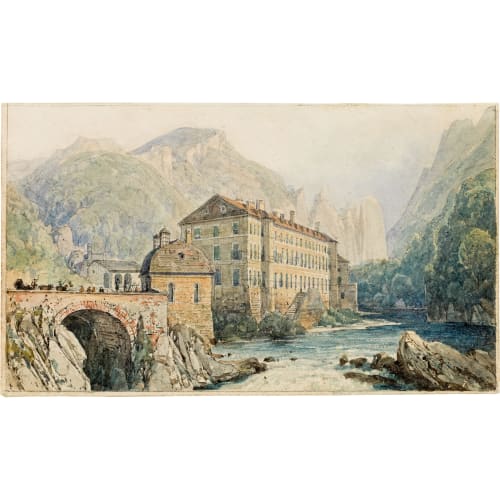Thomas Ender studied at the Vienna Academy of Fine Arts from 1806 on under Josef Mößmer and Franz Steinfeld. In 1810 he switched to the class of landscape painting under Laurenz Janscha. The many journeys he embarked upon as a student frequently took him to Salzburg, Styria, Tyrol, South Tyrol and Lake Garda, where he captured his experiences on canvas. Prince Metternich, who held the title of Curator to the Academy at the time, afforded the young artist the opportunity to take part in an expedition to Brazil in 1817/18 and later enabled him to study in Rome for several years. In 1826 his travels took him to Paris. In 1829 Archduke Johann appointed him court painter. He instructed Ender to immortalize his dominions, a commission which resulted in a rich watercolour collection of Alpine views. In 1837 the artist was asked to head the department for landscape painting at the Academy where he was appointed professor. Later that year he travelled east to Russia, Constantinople and Greece. In 1845 he was appointed to the Imperial Council. In 1850 he retired from his position at the Academy and continued to travel until the early 1860’s, mostly to Italy. While Thomas Ender features among the most important watercolourists of the 19th century, his oil paintings show a high degree of virtuosity as well. Ender was keen to capture what he considered to be the reality of nature. He achieved mastery not only in the technical aspects of watercolour painting, but also in the idyllic depiction of this reality.
Literature
W. Koschatzky, Thomas Ender. 1793 - 1875. Kammermaler Erzherzog Johanns, Graz 1982; Exhibition-catalogue: Von der Schönheit der Natur / Die Kammermaler Erzherzog Johanns, Albertina Wien, Wien 2015; Lexica: Wurzbach, Bodenstein, Thieme-Becker, Bénézit, Boetticher
